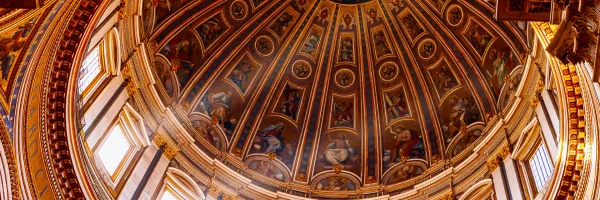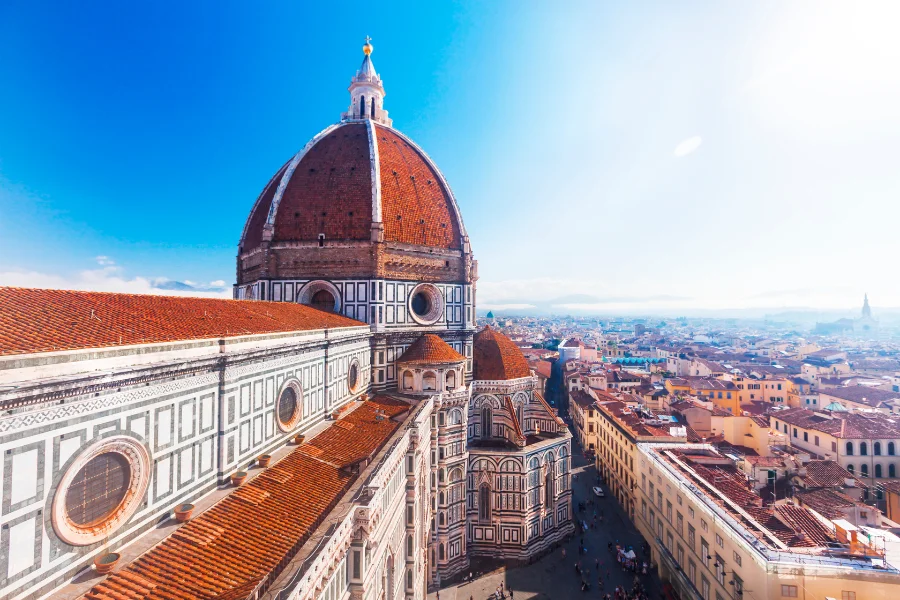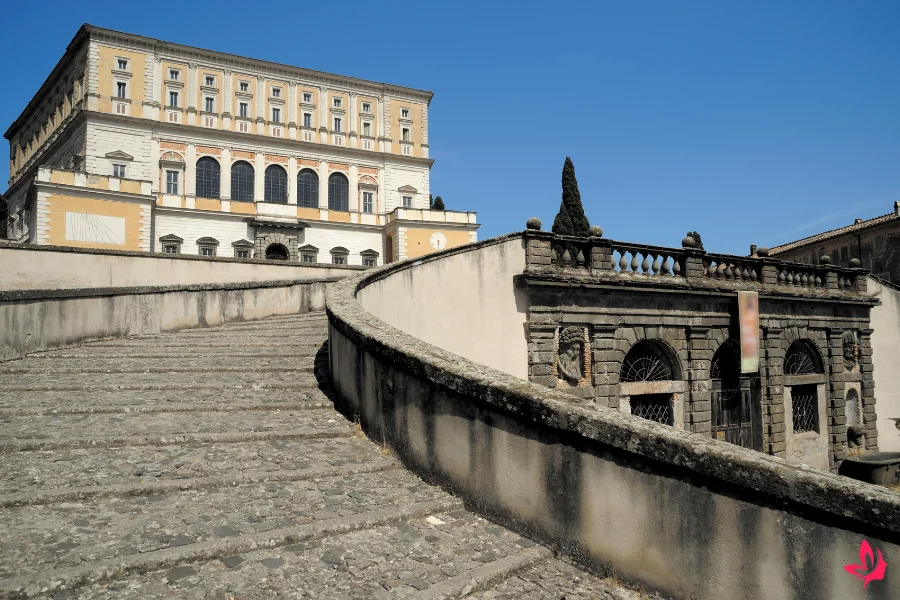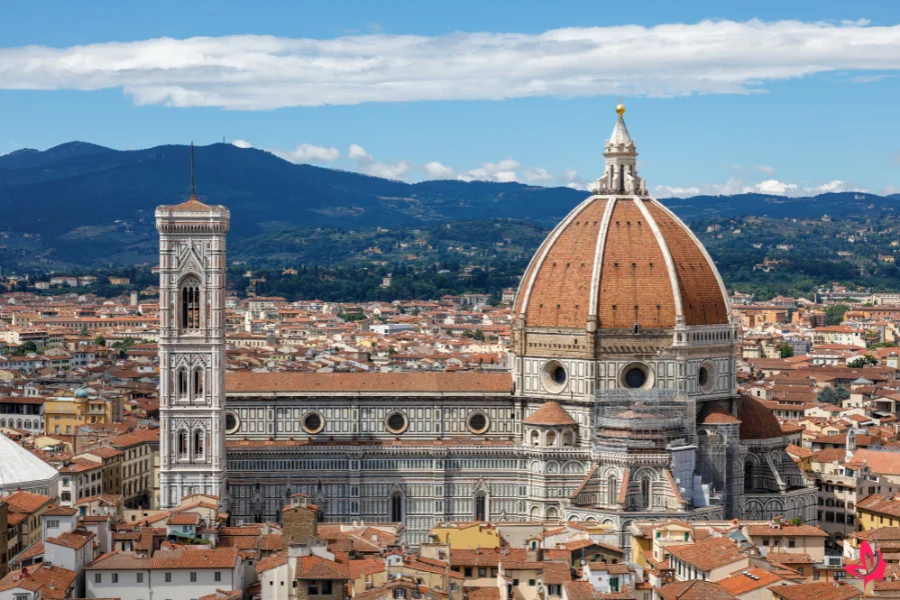Renaissance architecture emerged in Florence around the 1400s, departing from the medieval Gothic style. It was characterized by a revival of ancient Greek and Roman elements, such as columns, arches, and domes, paired with a focus on symmetry, proportion, and harmony.
This architectural style spread throughout Europe, replacing previous styles and influencing the design of buildings in many regions.
If you’re curious about how Renaissance architecture seamlessly combines artistic elegance with structural innovation, this exploration will guide you through its key features and cultural significance.
You will find insights into the harmonious proportions and mathematically precise ratios that define the style, along with examples of iconic structures that illustrate these principles. The most defining aspects include its classical order and a desire for symmetry and proportion, which convey balance and clarity.
Renaissance Architecture: Historical Context
Renaissance architecture marked a pivotal shift from the medieval Gothic style to a revival of classical forms. This era brought innovations that led to various styles, spanning three key phases: Early, High, and Late Renaissance.
Early Renaissance
Early Renaissance architecture began in Florence, Italy, around the 15th century. Architects turned to classical antiquity for inspiration during this period, emphasizing symmetry, proportion, and geometry.
Notable figures like Filippo Brunelleschi played a crucial role in establishing this foundation. Brunelleschi’s work on the dome of the Florence Cathedral exemplifies these principles.
Renaissance buildings often featured columns, pilasters, and rounded arches during this phase, influenced by Roman architectural elements.
A hallmark of this phase was the development of perspective in architecture, which affected both design and construction. As a result, architects aimed to create harmoniously proportioned spaces that reflected mathematical precision.
Using linear perspective helped make buildings appear more spacious and well-balanced, adding depth and dimension to the architecture.
High Renaissance
High Renaissance architecture peaked in the late 15th to early 16th centuries. The full realization of classical ideals characterized this period. Architects like Donato Bramante played a significant role, and his Tempietto at San Pietro in Montorio in Rome is a famous example.
This phase favored harmonic ratios, clear forms, and a sense of grandeur and simplicity.
During this time, the architectural Renaissance focused on creating monumental and harmonious edifices—the advancements in building techniques allowed for larger spans and grander scales in structures.
Enhanced by the growing influence of humanist philosophy, architecture began to reflect structural function and its aesthetic and cultural significance.
Late Renaissance
The Late Renaissance, also known as Mannerism, began around the mid-16th century and introduced a more decorative approach. Architects started experimenting with classical elements, distorting proportions, and presenting complex shapes in designs.
A notable figure was Michelangelo, whose work on St. Peter’s Basilica in Vatican City exhibited this shift towards grandeur and ornamentation.
Renaissance architecture during this phase became more about individual expression. Features like exaggerated forms and imaginative spatial arrangements began to appear.
This period saw the transference of Renaissance Italian architecture to other parts of Europe, eventually giving rise to styles such as French Renaissance architecture and English Renaissance architecture. Distinct regional adaptations occurred, each adding its unique touch to Renaissance-style architecture.
Characteristics of Renaissance Architecture
Renaissance architecture emerged in Europe from the 14th to 17th centuries and is defined by a return to classical ideas, emphasizing symmetry, proportion, and reasoned order. Buildings from the Renaissance often showcase classical elements reimagined for that era.
Significant features are evident in the architecture’s reliance on geometric precision and traditional styles blended with innovation.
Symmetry and Proportion
Symmetry and proportion are core characteristics of Renaissance architecture. Architects during the Renaissance focused on creating visual balance and harmony.
This was achieved by employing precise mathematical ratios inspired by the classical orders of ancient Greece and Rome. Buildings were designed to emphasize regular shapes and mirrored elements, ensuring all parts were related coherently.
Proportional systems played a crucial role in achieving both functionality and aesthetic appeal.
Architects guided the layout and design using simple geometric tools and inspiration from human anatomy to ensure visual pleasure and structural integrity. Overall, these elements helped make Italian Renaissance architecture harmonious and pleasing to the eye.
Classical Orders and Columns
Classical columns, such as Doric, Ionic, and Corinthian, were prominent in Renaissance architecture. These elements gave buildings a sense of grandeur and authority, often improving their aesthetic appeal.
Renaissance architects redefined and adapted these columns in new ways, leading to unique designs and innovations.
Columns were not limited to structural purposes. They often served decorative functions, contributing to the overall beauty of the design. Columns were at the forefront of Renaissance architecture, impacting interior and exterior aspects.
Geometric Shapes and Harmony
Geometric shapes, such as circles, squares, and triangles, were essential in the Renaissance of architecture. Architects employed these shapes to add harmony and order to their designs.
The consistent use of geometry ensured that designs maintained balance and coherence.
These shapes often represented philosophical and mathematical concepts, connecting architecture with broader Renaissance ideals of humanism. Buildings in the Renaissance reflect these principles, where geometry creates unified spaces that are both functional and inspiring.
Domes and Niches
Domes and niches are striking features of Renaissance architecture. They symbolize innovation and engineering prowess and provide iconic silhouettes in structures like Florence’s Cathedral of Santa Maria del Fiore.
Renaissance buildings frequently featured domes that highlighted spatial grandeur and light.
Conversely, architectural Niches are decorative recesses set into walls to display vases, fonts, or other objects. Ancient Roman architects extensively used niches in both interior and exterior walls, providing specialization in designs.
A notable example is the Roman Temple of Diana in Nîmes, France. These elements contributed to the complex aspects of High Renaissance architecture.
The interplay of domes and niches showcases the era’s blend of classical principles with novel expression.
Notable Architects of the Renaissance
Architects during the Renaissance significantly impacted how buildings were designed, emphasizing symmetry, proportion, and geometry. They also revived classical elements, influencing structures far beyond Italy.
Filippo Brunelleschi
Filippo Brunelleschi is widely regarded as a pioneer of Renaissance architecture. Born in 1377, he is best known for designing the dome of the Florence Cathedral, a masterpiece of engineering and style Renaissance accomplishment.
His work on the dome involved innovative techniques, such as using a herringbone pattern to stabilize the bricks, which allowed for a lighter, self-supporting structure.
Brunelleschi’s designs distinguished themselves from the Gothic architecture that preceded the Renaissance. He incorporated classical elements, such as columns and pilasters, that exemplified the characteristics of Renaissance architecture.
Brunelleschi’s contributions set a new standard for buildings in the Renaissance, combining functionality with aesthetic appeal.
Leon Battista Alberti
Leon Battista Alberti, born in 1404, was another key figure in Renaissance architecture. He was a true Renaissance man who excelled in multiple fields, including art, literature, and science.
He wrote “De Re Aedificatoria,” a treatise detailing architectural principles that defined Renaissance period architecture.
His designs often focused on harmony and proportion, reflecting the influence of ancient Greek and Roman structures.
Alberti’s facade of Santa Maria Novella in Florence is a prime example of Renaissance-style architecture. He integrated classical forms with a modern, humanist approach, ensuring that every part of the building contributed to its harmony. Alberti’s work profoundly impacted the architectural Renaissance in Italy and continues to inspire architects today.
Andrea Palladio
Active in the late Renaissance, Andrea Palladio significantly shaped Renaissance Italian architecture. Born in 1508, Palladio’s works emphasized symmetry, clarity, and grandeur, closely following classical traditions.
His villas, such as Villa Rotonda, perfectly exemplify how he combined function with beauty.
Palladio’s architectural style, known as Palladianism, became a defining element of Renaissance architecture. His book, “I Quattro Libri dell’Architettura,” further codified his principles and influenced buildings far beyond Italy, even impacting English Renaissance architecture.
Palladio’s designs and ideas laid the groundwork for what would later evolve into neo-Renaissance architecture, securing his legacy as one of the most influential architects of the Renaissance era.
Significant Examples of Renaissance Architecture
Renaissance architecture exemplifies a shift back to the classical orders and harmony inspired by ancient Roman and Greek structures. Famous buildings from this time reflect the balance and symmetry that characterized the Renaissance style.
St. Peter’s Basilica
St. Peter’s Basilica, located in Vatican City, is a monumental achievement in the architectural Renaissance. Designed by Donato Bramante, Michelangelo, and Gian Lorenzo Bernini, it was completed in the 17th century.
Its grand dome, designed by Michelangelo, dominates the skyline of Rome and is an iconic feature of Renaissance art and architecture.
The expansive nave and intricate decorations inside the basilica highlight Renaissance architectural features like symmetry and proportion. St. Peter’s Basilica is an important example of Renaissance church architecture and a hallmark of High Renaissance architecture.
The Palazzo Farnese
The Palazzo Farnese is a prime example of Renaissance Italian architecture in Rome. This majestic building reflects the influence of the High Renaissance, with architects like Antonio da Sangallo the Younger and Michelangelo contributing to its design.
The palazzo is renowned for its grand facade and harmonious proportions, which reflect characteristics of Renaissance architecture, such as order and clarity.
Inside, rooms are adorned with artworks that exemplify Renaissance-style architecture. The Palazzo Farnese remains significant in studying architecture Renaissance, showcasing Italian Renaissance craftsmanship and innovation.
Villa Rotonda
Villa Rotonda, or Villa Capra, is another Renaissance masterpiece designed by Andrea Palladio. Located in Vicenza, Italy, it reflects Palladio’s architectural principles, emphasizing symmetry and classicism derived from ancient Roman and Greek designs.
Its central plan features a domed rotunda, highlighting the symmetry and proportion that define Renaissance-style architecture.
Villa Rotonda is an architectural marvel and inspired by Neo-Renaissance architecture. Its influence spread across Europe during the Renaissance. The villa exemplifies the characteristics of Renaissance architecture with its balance and elegant form.
Influence and Legacy of Renaissance Architecture
Renaissance architecture began in 14th-century Italy and profoundly influenced European and worldwide architecture. It emphasized clarity, symmetry, and proportion, shifting away from the intricate designs of Gothic architecture.
Architects during the Renaissance drew inspiration from the classical ideals of ancient Greece and Rome. This revival led to innovations like columns, arches, and domes. A prominent example is the iconic dome of Florence’s Santa Maria del Fiore, designed by Filippo Brunelleschi.
The impact of architecture Renaissance extended beyond buildings. It influenced later styles such as Baroque, Rococo, and Neoclassical, which also embraced harmony and detail. Many Renaissance-era architectural elements, such as symmetrical facades and decorative elements, are found in these later styles.
Italian Renaissance Architecture was a precursor to the architectural marvels of the High Renaissance, where mastery of space and light was achieved. Renowned architects like Andrea Palladio played a significant role during this period. His work inspired the development of Palladianism, which later became popular in England and other parts of Europe.
Other regions embraced Renaissance characteristics, including Italy. Spanish Renaissance architecture incorporated Gothic and Moorish elements. This unique style is evident in buildings like the Escorial in Spain, illustrating a blend of Renaissance and local influences.
Renaissance architectural features continue to be showcased in contemporary architecture through classical design principles. Its enduring legacy reflects a pivotal moment in architectural history that celebrated balance, beauty, and functionality. The movement left an indelible mark, shaping architectural philosophy and practice across the globe.
Final Thoughts
Renaissance architecture emerged in Italy, shifting from medieval styles to classical inspiration. Architects began incorporating columns, domes, and arches reminiscent of ancient Rome and Greece, leading to buildings with symmetry, proportion, and geometry.
A key feature was the revival of ancient techniques. Perspective, used in design and planning, created a sense of depth and spatial harmony. These techniques were not only aesthetic but also functional.
Key periods in Renaissance architecture include:
- Early Renaissance (1400-1500)
- High Renaissance (1500-1520)
- Late Renaissance (also known as Mannerism)
Pivotal figures included architects like Filippo Brunelleschi and Leon Battista Alberti. Brunelleschi’s development of the dome, most notably seen in the Florence Cathedral, showcased innovative engineering techniques of the time.
Materials used were often marble, brick, and terracotta. This allowed for intricate designs and decorations. The focus on natural light enhanced the elegance and clarity of structures.
Renaissance architecture’s influence reached beyond Europe. It merged with local styles in places like Colonial America, leading to new architectural fusions that still stand today.
Just as Renaissance painters like Leonardo da Vinci explored depth and perspective in the visual arts, architects achieved similar feats in building design. This innovative spirit continues to inspire and influence modern architectural practices, making the legacy of the Renaissance period evident in today’s world.
Frequently Asked Questions
Renaissance architecture is known for its use of symmetry, proportion, and elements like columns and domes. It reflects classical influences with regional variations across Europe.
What are the defining characteristics of the Architectural Renaissance?
Renaissance architecture is characterized by harmonious balance, proportion, and an inspired use of classical Roman elements. Key features include symmetrical layouts, columns, rounded arches, and domes.
What is the most famous Renaissance architecture?
Among the most renowned examples is St. Peter’s Basilica in Vatican City. Its impressive design and dome were led by architects such as Michelangelo, showcasing the grandeur of the Renaissance style.
Could you explain the key features of high Renaissance architecture?
High Renaissance architecture reached its peak around 1500. It focused on grandeur and mathematical precision, combining full-blooded classical revival with harmonious proportions and grandiose structures.
How do we identify Renaissance architecture?
Recognizing the architectural Renaissance involves examining symmetry, classical motifs, columns, and decorative details. Buildings often feature prominent elements like pilasters and semicircular arches.
How does Italian Renaissance architecture differ from that of other regions?
Italian Renaissance architecture emphasizes more ornate designs and proportions. In contrast, regions like Northern Europe integrated Gothic elements, resulting in a more vertical and less uniform appearance.
What are the main principles guiding the design of Renaissance buildings?
Principles of symmetry, proportion, and a balance of parts guide the design of Renaissance buildings. These principles draw from the classical ideals of Ancient Rome.







 I’m Leonardo Bianchi, the mind behind Leonardo da Vinci's Inventions. Thanks for visiting.
I’m Leonardo Bianchi, the mind behind Leonardo da Vinci's Inventions. Thanks for visiting. 


